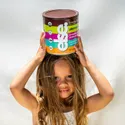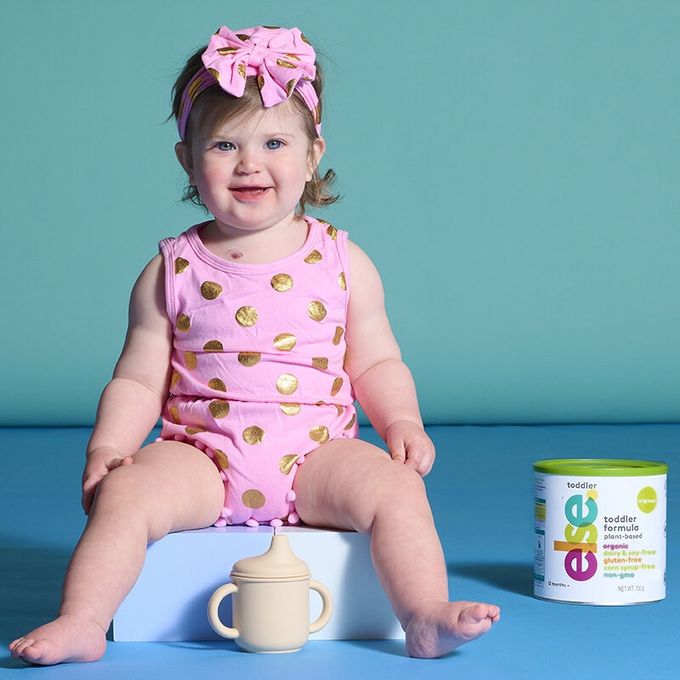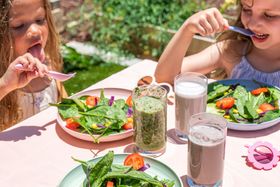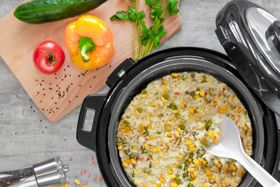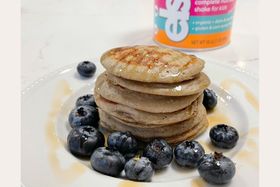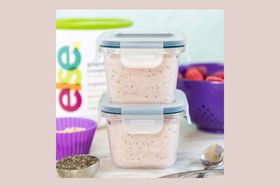35 Wholesome and Delicious Meals for 2 Year Olds
Published April 18, 2024
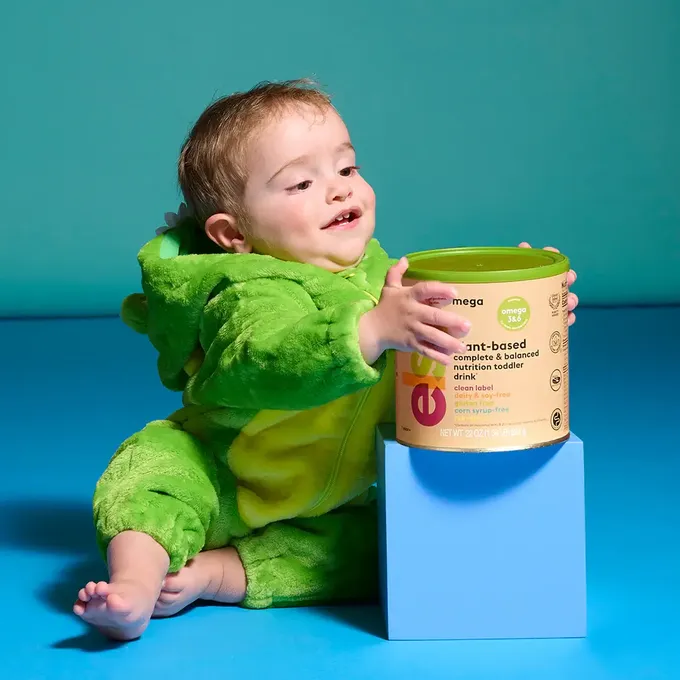
Discovering meals for 2-year-olds that are both nutritious and kid-approved doesn’t have to be a headache. Say goodbye to mealtime battles with our curated list of easy, tasty recipes designed to delight your toddler’s taste buds while providing them the essential nutrients they need during this stage of rapid growth.
Key Takeaways
Make breakfast fun and nutritious with tasty options like scrambled eggs and avocado toast, or sneak veggies into sweet morning starters like oatmeal and muffins.
Get creative with lunches by offering colorful, veggie-packed dishes like Cauliflower Cheese Bites and Fruit Veggie Muffins, as well as one-dish dinners to save prep time and encourage family eating.
Snacks can be delicious without a sugar overload - go for sweet treats like freeze-dried fruits and savory munchies like roasted chickpeas to keep energy levels up between meals.
Nourishing Breakfasts to Kickstart the Day
A well-balanced breakfast is a vital start to your toddler’s day, supplying them with the necessary energy and nutrients for a day full of exploration and learning. But how do you make breakfast enticing and nutritious at the same time? Fret not, because we’ve got a lineup of toddler meal ideas that are sure to get those little taste buds tingling first thing in the morning!
Scrambled eggs, avocado toast, and banana pancakes are popular breakfast choices for toddlers, not only because they’re delicious, but also because they’re packed with essential nutrients for a growing child. Plus, these breakfast options are quick to make, which means busy parents can provide a nourishing meal without having to spend too much time in the kitchen. Who said breakfast has to be boring?
Sweet Morning Starters
Sweet breakfast doesn’t have to mean sugar-loaded cereals. With a bit of creativity, we can turn nutritious ingredients into sweet morning starters that are both delicious and good for your little ones. Think oatmeal with fresh fruit, yogurt parfaits, and toddler breakfast muffins sweetened naturally, paired with milk or yogurt and fruit for a complete breakfast.
For an extra nutrient boost, try healthy baked options such as sweet potato banana bites or vegetable muffins. They deliver sweetness without the excess sugar, offering a delightful and balanced start to your toddler’s day.
Protein-Packed Beginnings
Breakfast is more than just a bowl of cereal. It’s the perfect opportunity to sneak in some protein, which plays an essential role in your toddler’s growth and development. Foods like eggs, yogurt, and nut butters are high in protein and can be easily incorporated into your toddler’s breakfast.
And if you’re looking for something a little different, why not try prepared options such as Dr. Prager’s California Veggie burger or chicken meatballs with vegetables? These can serve as high-protein breakfast choices that are packed with flavor and fun.
Else Nutrition Toddler Formulas & Kids Nutrition Drinks for 2 year olds
When it comes to nutritional support for your toddler, Else Nutrition’s plant-based toddler formulas and kids’ nutrition drinks can be a game-changer. Else™ Toddler Omega, for example, is a complete & balanced nutrition drink for toddlers, containing all macronutrients and more than 20 essential vitamins and minerals. These drinks are not just for daily consumption, but can also be used occasionally as part of a nutrition plan.
What’s more, Else Kids products are:
Certified plant-based
Soy-free
Boast a clean label with a purity award
Free from common allergens
USDA Organic
Loaded with essential nutrients
Making them a safe and healthy choice for your little ones. They are perfect for kids aged 2 years and above.
Quick and Healthy Toast Toppings
Toast isn’t just a breakfast staple; it can also be a canvas for healthy and tasty toppings. Nutritious spreads like peanut butter or seed butter can be a hit with toddlers, and for a change, these spreads can be applied to whole-grain tortillas or rice cakes instead of traditional bread slices.
The protein in Else™ Toddler Omega, which comes from buckwheat and almonds, can be another nutritious spread for your toddler’s toast, providing them with a diverse fat profile derived from almond butter, coconut oil, and rapeseed oil.
Lunch Ideas That Go Beyond PB&J
Lunchtime is a golden opportunity to introduce new foods to your toddler. It’s time to think beyond the classic PB&J and explore a world of creative and nutritious lunch ideas. From Cauliflower Cheese Bites to Pizza Pockets, there are plenty of less messy, toddler-friendly alternatives to traditional favorites that are easy to eat with little hands. And what about Egg Cups baked in a muffin tray? They are manageable, nutritious, and perfect for a toddler’s lunch.
You can even make your own Fish Fingers as a healthier choice over store-bought frozen options. It’s not only a fun cooking activity, but also a great way to introduce seafood to your toddler’s diet.
For a more adventurous lunch, why not try Italian Deli Pinwheel Sandwiches filled with:
salami
pepperoni
prosciutto
provolone
They introduce new flavors and textures for a varied lunch experience.
Veggie-Loaded Delights
Vegetables don’t have to be boring. In fact, they can be the star of your toddler’s lunch. Fruity Veggie Muffins and carrot or zucchini muffins are excellent ways to include vegetables in your toddler’s diet by sneaking them into baked goods. Smoothies that incorporate vegetables like spinach, zucchini, or cauliflower are also a great way to deliver nutrients without your toddler even knowing it.
And let’s not forget about Pasta with Hidden Veg Sauce and veggies mixed into fried rice - these dishes can ensure toddlers consume vegetables in a form they already enjoy.
Wholesome Grains and Proteins
The key to a balanced lunch lies in the right combination of wholesome grains and proteins. Whole grains like brown rice and oatmeal can be paired with nutritious protein sources like fish, tofu, or hummus. And what about healthy chicken nuggets made from chicken breast? They’re not just a healthier protein choice compared to processed snacks, but they’re also a toddler favorite.
Dairy-Free Dishes for Sensitive Tummies
If your toddler has a sensitive tummy or a dairy intolerance, lunch can sometimes be a challenge. But, with a little creativity, you can prepare delicious dairy-free dishes that your toddler will love. Vegan arancini and Pizza Puff Pinwheels, for example, serve as delicious dairy-free main course options that can be enjoyed for lunch, substituting traditional cheeses with plant-based alternatives.
Chicken rollups with avocado, cottage cheese, and dairy-free tomato soup offer wholesome lunch alternatives that cater to kids with dairy sensitivities, ensuring they don’t miss out on nutritious and tasty foods.
Dinner Table Winners for the Whole Family
When it comes to dinner, finding meals that the whole family will enjoy can be a tall order. But, it’s not impossible! With a little bit of planning and some creativity, you can whip up dinner table winners that both toddlers and adults will love.
Some quick and simple toddler dinner ideas that appeal to toddlers and can be enjoyed by the whole family are easy toddler meals such as:
Fettuccine with Butter and Cheese
Baking sheet quesadillas
Margherita Pizza
Korean-Style Popcorn Cauliflower
These options are family-friendly and cater to picky eaters, ensuring kids eat and making mealtime easier for everyone.
One Dish Wonders
One-dish meals are a lifesaver for busy parents. Not only do they reduce the number of dishes to clean, but they also offer a quicker and simplified cooking process. Some examples of one-dish meals include:
One-pot spaghetti bolognese
Sheet pan chicken and vegetables
Slow cooker chili
Skillet lasagna
These meals can make dinner preparation a breeze.
International one-dish meals such as Massaman beef curry, chicken alfredo tortellini, and one-pot vegetarian tortellini alfredo can bring diverse flavors to the table in a single pot, such as Italian and Thai cuisines.
Reinvented Classics
Reinventing classic dishes into healthier alternatives can make dinner exciting and nutritious for your toddler. Turning a classic meatloaf into a turkey meatloaf not only reduces fat content but also allows for the inclusion of finely chopped vegetables hidden within the mix.
And how about using cauliflower as a lower-carb alternative to pizza crusts? Or replacing wheat pasta with spiraled vegetables to add more nutrients and less gluten to a toddler’s meal?
International Flavors Made Easy
Introducing your toddler to international cuisines can be done through simple, tasty recipes that cater to their developing palates. A one-pan hot honey chicken and rice recipe is an excellent example of a global dish that’s easy to make. This dish provides a gentle introduction to diverse flavors without overwhelming a young child’s taste buds.
Plus, one-pan meals offer the added benefit of quick preparation and cleanup, fitting well into busy family lifestyles.
Snack Time Superstars
Between meals, toddlers often need a little something to keep their energy levels up. That’s where snacks come in. But not just any snacks - nutritious and appealing ones that pack a punch in terms of flavor and health benefits. Whether your toddler likes them sweet or savory, there’s a snack out there that’s sure to tickle their taste buds!
Snacks rich in iron, such as pureed meats and fortified cereals, can contribute to a toddler’s cognitive development. Yogurt, which contains probiotics, is high in calcium and is an excellent snack for supporting a young child’s bone development. Whole grain snacks, like brown rice cakes or whole grain crackers, provide essential fiber and nutrients for a growing toddler. A variety of fruits, such as blueberries, raspberries, and apple slices, can provide essential vitamins and antioxidants.
Finger Food Favorites
Finger foods are a fantastic way to encourage self-feeding and fine motor skill development in toddlers. Fruit options like soft berries, kiwi slices, and mandarin oranges are great for little fingers, while grated apples paired with yogurt dip can add a fun twist to snack time.
Vegetables such as matchstick carrots, peas, and roasted sweet potatoes can be served with hummus or ranch, and crunchy vegetable crisps made from carrots, parsnips, or beetroot offer a healthy vitamin-packed snack.
Sweet Treats Without the Sugar Rush
Sweet snacks don’t always have to come with a sugar rush. In fact, there are plenty of naturally sweet snack options for toddlers that are both delicious and nutritious. Some examples include:
Freeze-dried fruits
Watermelon lollies
Grilled pineapple rings
Roasted root vegetables with a touch of honey
These naturally sweet snacks are safe for toddlers to enjoy.
Nutritious bite-sized muffins for toddlers can be made using no added sugar by incorporating leftover jars of baby food like oats, banana, and carrots.
Savory Munchies
Just as there are sweet treats, there are plenty of savory munchies for your toddler to enjoy. Savory snacks like mini corn tortilla pizzas and roasted chickpeas are delicious options for toddlers to enjoy between meals.
Mini corn tortilla pizzas and quesadillas with added vegetables or shredded chicken can be customized to suit the nutritional needs and tastes of toddlers.
Hydration for Happy Toddlers
Just as important as solid food, hydration plays a crucial role in your toddler’s health. Did you know that children’s bodies are largely made up of water, which is crucial for important functions such as regulating body temperature, forming various body fluids, and facilitating everyday physiological processes? Because of their high water composition, young children are especially prone to dehydration, which can lead to decreased physical performance, fatigue, headaches, and irritability.
Water is the most suitable drink for children, and parents should prioritize it over sugary and acidic beverages such as sports drinks, fruit juices, and soft drinks that can increase the risk of tooth decay. Providing them with their own water bottle, reminding them to drink before and during physical activity, and choosing water over sugary drinks are some useful tips for ensuring toddlers stay hydrated.
Building a Well Balanced Meal
A well-balanced meal for toddlers should include a variety of food sources from the five fundamental food groups—fruits, vegetables, grains, proteins, and dairy or fortified soy alternatives—while limiting sodium and added sugars. Balanced breakfast options for toddlers can include a combination of protein and fats like peanut butter or eggs, low-sugar, nutrient-fortified cereals, and whole grains such as mini bagels to provide energy and nutrients for growth.
Parents play a crucial role in shaping eating habits in toddlers. Children often emulate adults, so it’s essential for parents to model healthy eating habits, as their actions significantly influence their child’s dietary choices and behaviors. So, let’s look at how we can build a colorful, nutrient-rich, and well-balanced meal for our toddlers!
Colorful Plates Full of Nutrients
We eat with our eyes first, and toddlers are no different! Including a variety of colorful fruits and vegetables in a toddler’s meals enhances the visual appeal and can encourage them to try new foods. A well-balanced meal for toddlers encompasses fruits and vegetables of various colors, delivering essential vitamins, minerals, and phytochemicals.
Dietitians suggest incorporating daily vitamin A rich vegetables like sweet potatoes or carrots, and vitamin C rich fruits such as strawberries or oranges into a toddler’s diet.
The Role of Protein and Carbs
Protein and carbohydrates play a vital role in your toddler’s diet. Protein is crucial for the growth and repair of tissues in toddlers, while carbohydrates provide your toddler with the necessary energy for their active development.
So, make sure to include a good balance of protein and carbs in your toddler’s meals for optimal growth and energy.
Smart Fats for Growing Minds
Another important nutrient group for toddlers is fats, particularly the healthy ones. Healthy fats are essential for the brain development of toddlers. Foods like avocados and full-fat dairy products, as well as nut and seed butters, provide the necessary fats for cognitive growth.
Fatty fish such as salmon and foods cooked in oil like avocado oil are also excellent sources of healthy fats for brain development.
The Art of Introducing New Foods
When it comes to introducing new foods to your toddler, patience, persistence, and a positive attitude can go a long way. It’s important to remember that it’s okay if your toddler doesn’t take to a new food right away. In fact, they may need to be exposed to a new food many times, potentially up to 15 exposures or more, before they become comfortable with it.
Introducing new foods to toddlers can be an exciting journey of discovery. It’s all about starting small and gradually increasing the variety. So, let’s delve into some strategies that can help you master the art of introducing new foods to your little one.
Consistency is Key
Consistency is key when it comes to introducing new foods to your toddler. It might take numerous attempts before a child starts to like them. But don’t worry, persistence pays off! Providing toddlers with praise when they try new foods can encourage them to be more adventurous in their eating habits.
Remember, applying pressure or offering rewards for eating new foods can yield negative reactions from children and does not contribute to long-term acceptance of those foods.
Making Mealtime Fun
Making mealtime fun can make introducing new foods a lot easier. Encouraging toddlers to participate in meal preparation can include activities like mixing batter for breakfast or adding toppings to yogurt, which can make them more interested in eating the meal they helped create.
Using creativity in the kitchen by cutting foods into fun shapes and offering a variety of utensils can enhance a child’s visual interest and willingness to engage with new foods.
Pairing Favorites With New Tastes
Another strategy for introducing new foods is to pair them with your toddler’s favorites. Including a familiar favorite food in the meal can help toddlers feel more comfortable when being exposed to new foods. So, why not serve those new veggies with their favorite hummus, or introduce that new fruit with a dollop of their beloved yogurt?
It’s all about making new foods less intimidating and more appealing for your little eater.
Leftovers Reinvented
Leftovers can often be a staple in the fridge, especially when cooking for the whole family. But, let’s face it, eating the same thing over and over can get a bit boring, especially for your adventurous little eater. The good news is, with a touch of creativity and some clever tactics, we can transform those leftovers into appealing meals for toddlers.
From turning mini meatloaves into toddler-sized burgers or crumbling them into pasta sauces for a protein-rich meal the following day to making Stuffed Potato Skins from leftover jacket potatoes, the possibilities are endless. So, let’s dive into some fresh takes on classic leftovers, quick fixes with frozen vegetables and transforming last night’s dinner.
Transforming Last Night's Dinner
Last night’s dinner can become today’s exciting lunch with a little creativity. For example, you can turn leftover pasta into a delicious Pasta Frittata that is suitable for toddlers.
And what about using leftover purées? They can bring new life to baking recipes, such as using the purees in pancakes, muffins, and bread to increase both flavor and nutrition.
Fresh Takes on Classic Leftovers
Even classic leftovers can get a fresh take. Instead of throwing away that extra baby food, why not incorporate it into soups and stews? It can enhance the meals’ nutritional value and palatability for young children.
You can even use it to make nutritious bite-sized muffins for toddlers, using no added sugar by incorporating leftover jars of baby food like oats, banana, and carrots.
Quick Fixes With Frozen Vegetables
Frozen vegetables are a real lifesaver, especially on busy days. They’re a quick and easy way to add nutrients to any meal. You can blend them into soups or combine them with grains like rice for a quick and nutritious meal.
And if you’re feeling a bit adventurous, try roasting frozen vegetables like:
broccoli
green beans
peppers
roasted cauliflower
They might take a bit more time in the oven to remove the excess moisture that comes from freezing, but the result is worth it - a tasty and nutrient-rich hard boiled egg meal that your toddler will love.
Essential Kitchen Tools for Toddler Meals
Preparing meals for toddlers can be a fun and rewarding experience, but having the right tools in the kitchen can make it even better. From kitchen scissors for quickly cutting up foods like grapes and chicken, to an air fryer for rapidly cooking foods without needing to heat up a conventional oven, there are several essential kitchen tools that can make meal preparation for your toddler a breeze.
Having a variety of storage containers is also crucial for managing both single servings for toddlers and family-sized portions. Options suitable for freezing and packed lunches are ideal for keeping those meals fresh and ready to go. With these essential kitchen tools at your disposal, you’ll be well-equipped to whip up a variety of delicious and nutritious meals for your toddler.
Baby Led Weaning Favorites
Baby led weaning is a method of introducing solids to your baby, allowing them to self-feed and explore a variety of textures, tastes, and smells. It not only encourages independence, but it also helps to develop fine motor skills and self-feeding capabilities. From breakfast bakes with ingredients like sausage, eggs, and potatoes to scrambled eggs with blueberries and sautéed sweet potatoes, there are plenty of baby led weaning favorites that are easy to prepare and perfect for your toddler to enjoy.
Encouraging children to be part of the food selection process in the grocery store and to assist in meal preparation can increase their eagerness to try new foods, complementing the baby led weaning approach. It’s not just about the food, but also about fostering a positive eating experience from a young age.
Summary
From nourishing breakfasts to kickstart the day, through lunch ideas that go beyond PB&J, to dinner table winners for the whole family, we’ve covered a wide array of meal ideas for toddlers. We’ve also explored the importance of hydration, the art of introducing new foods, and how to reinvent leftovers into exciting new meals. With these tips and ideas, mealtime can be a fun, enjoyable, and nutritious experience for your toddler. So, why not try some of these ideas and watch your little one discover the joy of eating?
Frequently Asked Questions
What are some easy breakfast ideas for toddlers?
Try making scrambled eggs, avocado toast, and banana pancakes for your toddlers' breakfast. These options are quick to make and delicious, perfect for busy parents.
How can I make lunch more exciting for my toddler?
You can make lunch more exciting for your toddler by introducing new flavors and textures, such as Italian Deli Pinwheel Sandwiches, and incorporating colorful fruits and vegetables for a visually appealing meal. Enjoy making lunchtime exciting for your little one!
What are some family-friendly dinner ideas?
You can try making fettuccine with butter and cheese, baking sheet quesadillas, or Margherita Pizza using store-bought dough. These meals are easy to prepare and delicious, making them great for busy families.
What are some healthy snack options for toddlers?
You can offer your toddler soft berries, kiwi slices, mandarin oranges, matchstick carrots, peas, roasted sweet potatoes with hummus or ranch, freeze-dried fruits, watermelon lollies, and grilled pineapple rings as healthy snack options. Enjoy!
How can I introduce new foods to my toddler?
Introduce new foods to your toddler by starting with small portions and being patient as it may take time for them to like it. Try involving them in meal preparation and get creative in the kitchen, as well as pairing new foods with their favorites to make them more appealing.




